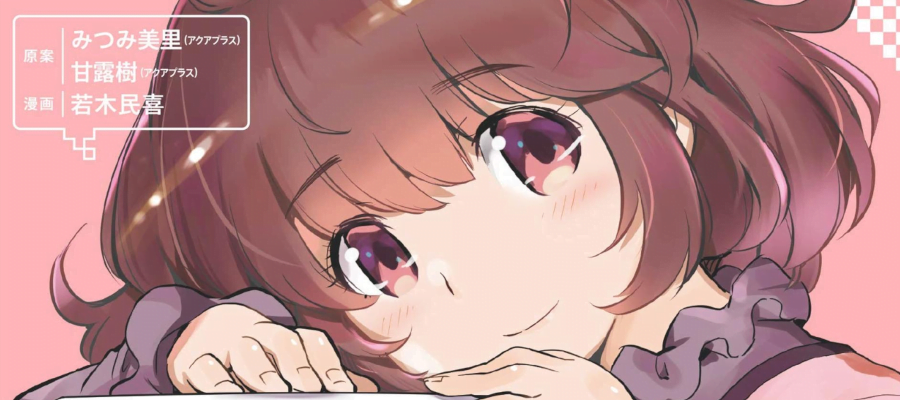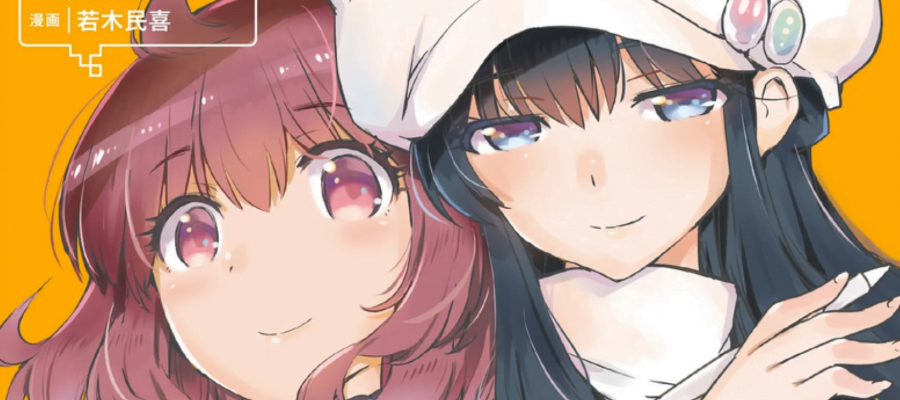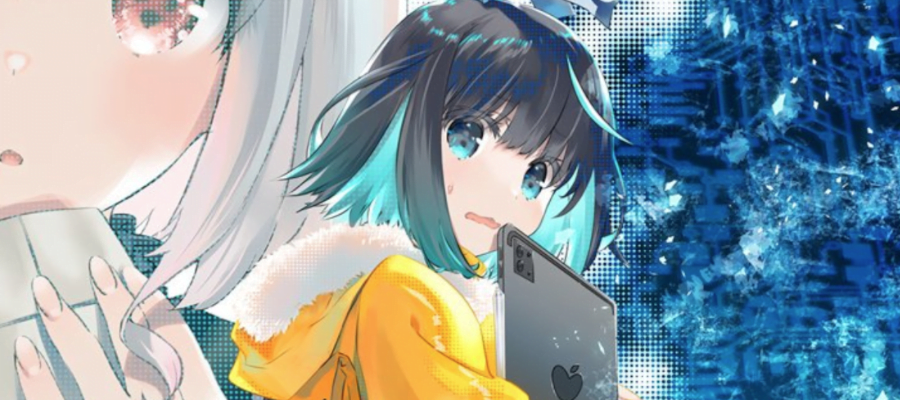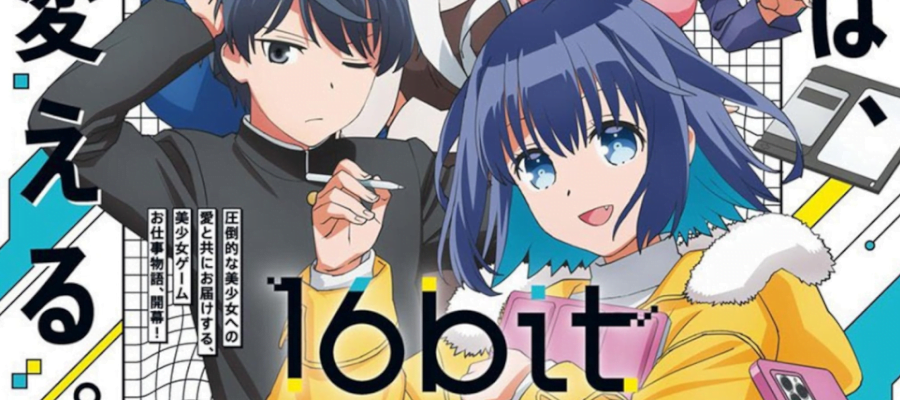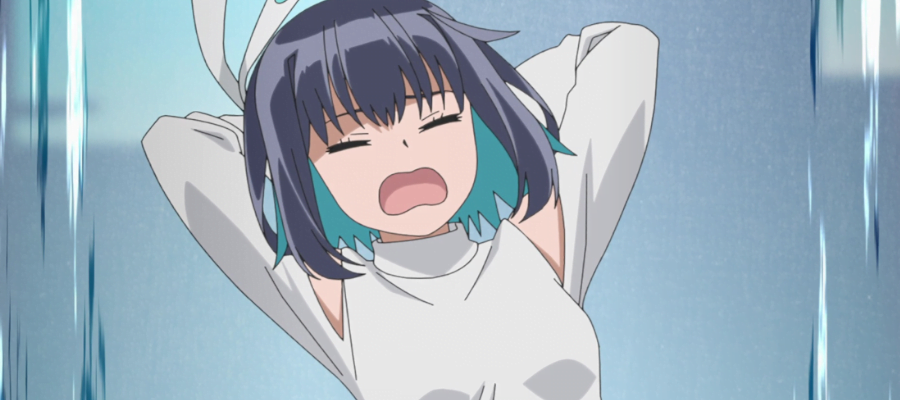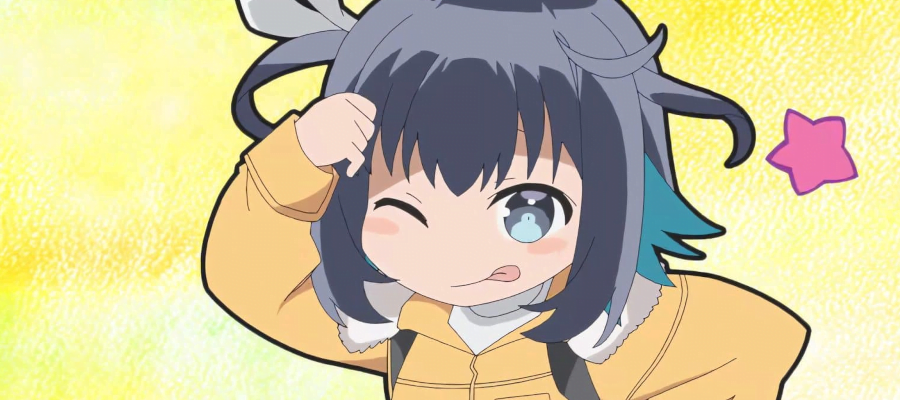Ah, Talen month, Talen month! A month where I celebrate media I love, or maybe media I really want to talk about. Media I want to talk about possibly because I think it’s a topic I would normally find too mean, or too cruel to focus on. After all who wants to hear me vent or complain or just drag something for being mediocre.
I do!
It’s Talen Month, and this time around I’m going to do something different in that I’m going to talk about something amazing, something I love, a manga that I think is genuinely, wholeheartedly excellent that you can blitz through in an afternoon, and also, uh, the anime spinoff of it that serves in my mind as one of the examples of how 2023 just was a mid freaking year for anime. I want to talk to you about one of my favourite genres of media, ‘people making things from an insider perspective, with a dash of economic structures,’ and then one of my least favourites, ‘spinoff that is embarrassed to be associated with a much, much better piece of media.’
Up front before I dive in, I’m going to talk about both the manga 16 Bit Sensation and I’m also going to talk about the anime with a similar name, 16 Bit Sensation: Another Layer. I’m going to spoil details about the storyline of Another Layer, which I don’t think should be a problem because I don’t think it’s any good and it’s not like spoiling it would be in any way a diminishment of your enjoyment of it.
Because I don’t find it very enjoyable.
16 Bit Sensation is a doujinshi that became a real proper published manga, produced by Misato Mitsumi, Tatsuki Amazuyu, and Tamiki Wakaki. It follows the story of Meiko, who goes from a retail job at a rental store to a job assisting illustration to a job doing original illustration and character design and programming for a company called Alcohol Soft, starting in 1993 and running till the late 90s. The manga follows a person who goes from having no access to computers to the stage where she’s buying her own home PC, when that kind of investment was a huge chunk of money spent on a domestic purchase.
Along the way you have a story that shows things like tiny companies restructuring and growing, the way that people’s skills built on one another, and the way that videogames in the 1990s were full of massive, immense technical shifts for the better — like, do you know how many images got made for distributing on screens with only sixteen colours? — and how these shifts didn’t come with immediate access. Like, sure, you get 240 more colours, but now you have to be able to use them, and you need to get familiar with the technology that lets you do it.
In the process you get to see different conversations about what the kinds of games they’re making include, who they are for, and how disconnected pieces can be. A writer generates a script, a programmer makes code, and illustrators make graphics that are to be displayed as part of that script. But those people don’t need to know exactly what’s going on one to another, and sometimes, they can be completely isolated from one another. As the production gets bigger, as the needs for the content of the game gets deeper, they add more people to the creative staff. A writer can strike out entirely on their own and outsource the art. Companies can split and collapse together and it’s entirely possible that just one person’s bad decisions can catastrophically mess with your finances, because this is an industry that was flying without much of a support structure.
Because they were making pornography.
There’s a puritanical attempt to neglect that visual novels, the material that carried the personal gaming landscape on its shoulders through the 90s, was largely pornographic. Anime spinoffs of these games often relied on not mentioning or including the pornography, because, well, you know, this is so good, it’s good even without the pornography! It’s embarrassing, it’s shameful to engage with and do anything with that —
I mean heaven forfend people recognise how much we like, share, and engage with horny media.
16 Bit Sensation: Another Layer is an anime, set in the existing story of 16 Bit Sensation. It follows the story of Konoha Akisato, an illustrator working for a small company that makes eroge in the current 2020s. Distressed by her company’s unwillingness to make her dream games a reality, she accidentallies a time travel plot device and gets thrown back in time to the glory days of 1990s pixel art visual novels. She jumps back and forth between history and the now, seeing how changes she made to the past impact her now.
And look.
Artists have gotten better since then. For example, even a child artist from now, thrown back to 1993, would, with the modern tools we have, be absolutely amazing to the ability of artists back then. Certainly for drawing cute girls in the anime style. Technique and skill have broadened, tools are more available, and people have more ways and tools to practice. I am a firm believer that people are, generally, getting better at niche skills. I have no doubt that Konoha, who is a whole ass adult, could blow people’s minds with the skills she has now, if she could find a way to share them.
Anyway, the anime then follows a sequence of these time hops back and forth that include a boy from that story jumping further back in time to work on a videogame back in the 1980s, and seeing how complicated that process was, and all in the service of uh
uh
the time travelling alien AI art consciousness, that wants to make good? art? By dissolving things in chemicals.
Eventually Konoha’s machinations create a game so good it ruins the visual novel genre, transports it to America, where it starts to look like a different thing, and then in the process kills the videogame and anime industry in Japan, ignoring the way that that also happened in our own history, and part of what helped the industry hold on was the prevalence of niche Japanese media and oh no I am getting angry about this all over again. Ahem. Let me start that again:
The culmination of 16 Bit Sensation: Another Layer is that Konoha travels to a dystopian future. There, Fate looks ugly, because Americans made it, and she hates how the world she crafted through her amazing bishoujou game has the unintended consequence of making videogames, uh, American. She resolves to fix this by going back in time and making another game just as good as the first one, thanks to the power of generative AI tools like Midjourney and ChatGPT and good god I can’t believe I’m saying this, but she’s interrupted and kidnapped in the middle of this process, eventually fleeing from her captors who want to stick her – and other artists – into VR tanks so they can harvest their art. Note that this isn’t seen as being bad for artists, it’s seen as being unfair because it means that whoever has the most money can make the best games.
Then a UFO shows up and sorts the plot out.
I’m not joking.
Or exaggerating.
Cards on the table, if it wasn’t obvious already, I think 16 Bit Sensation is a really interesting manga that I liked a lot. I think 16 Bit Sensation: Another Layer if it was an entirely unique anime would merely be a traditionally mid anime that used an interesting idea as wallpaper to colour a story that was otherwise about something else, clueless about the detail it claimed to be about. The wild disparity between these two does not necessarily mean that 16 Bit Sensation: Another Layer diminishes 16 Bit Sensation in any way. It’s not like a mediocre story set in another more interesting story actually hurts it. What I think makes Another Layer feel so awful to me is the way that it ostensibly strives to be about something in the same way 16 Bit Sensation is, and in the process presents a description of those things that doesn’t understand them at all.
And thing is, that talk about ‘not diminishing’ is – well, it’s just a lie. See, part of the problem is that Another Layer really is diminishing 16 Bit Sensation. If you go check the wikipedia page for 16 Bit Sensation, despite describing the series as the result of a manga that was originally a dojinshi, it introduces the characters by focusing on Konoha, and describing them in terms of their place in the anime. This means that Meiko, the protagonist of the manga, is not mentioned as such, and is mentioned as the fourth character. In the anime, she barely gets lines, which you might imagine is fine because she gets all her dialogue in the manga. But if you liked that manga because of her story, you won’t see it in Another Layer because Another Layer isn’t about that manga.
It’s about not wanting to talk about that manga.
Fundamentally, 16 Bit Sensation is a doujin media that told a story of a really interesting period of the mid-90s about a type of technology and its limitations. It’s about how small businesses with low overheads in an under-regulated environment created remarkable media with a specific kind of technology. The story in the manga puts the technology, the people, and the games front and centre. The way that the media is literally stigmatised and yet also lucrative is presented as a serious part of the story. There’s a serious consideration about what it means to have a young child working even adjacent to it. To simplify it, 16 Bit Sensation is about a thing that happened that you probably don’t understand, and telling its story is both interesting and meaningful. It’s about the history of a type of porn entertainment media.
Another Layer takes this period of history and sanitises every surface. It takes the women who were there, and disappears their story under the story of a modern, current person who disdains the art form they worked on. It is a story ostensibly about a woman who buys and loves h-games who has no opinion or interest in the actual content of that media. It doesn’t want to talk about the limitations of that technology, or the ways people solved problems, and instead makes do by inventing a fantasy of ‘what if you could just make the industry different by wanting it more.’
More than anything else it wants to be about a world-changing game that it literally cannot meaningfully describe or engage with because this anime ostensibly about a game doesn’t know how it could possibly represent a game that good, and the obvious reason why it can’t is because no such thing could exist and the idea that it could comes from the same writing school as ‘with a jump, Jack was free.’ Another Layer introduces ideas that imply it wants to talk about the history of pornographic art in Japan, automation and generative art and bad labor conditions in artistic industries, and then decides to solve all those problems it grotesquely fails to understand with fucking aliens.
I hate Another Layer. I hate the show built out of 16 Bit Sensation. I don’t hate it for what it wants to be, I hate that it’s attached to 16 Bit Sensation. I hate that someone read that manga and thought: You know what this needs? More focus on this boy who we can build up to being the worst kind of gatekeeping nerd. Less focus on why people got into this industry and how they relate to the art of it, more focus on the imagined aesthetics of what these things could hypothetically be about as long as you definitely, definitely don’t look at them.
Another Layer takes an important part of the pornographic history of a vitally important medium and uses it to say nothing. It is about pornography without ever wanting to say the word. It takes an interesting story that manages to circumvent vulgarity, and cannot imagine finding it interesting just telling its story.
It’s like its own Mormon scripture.
